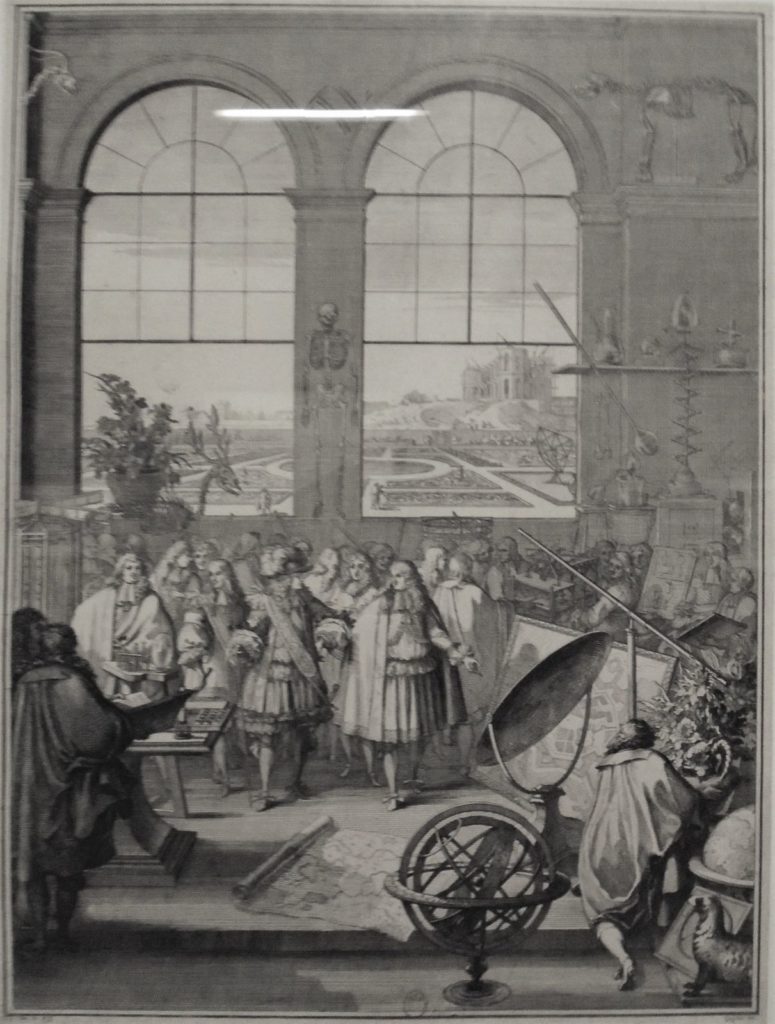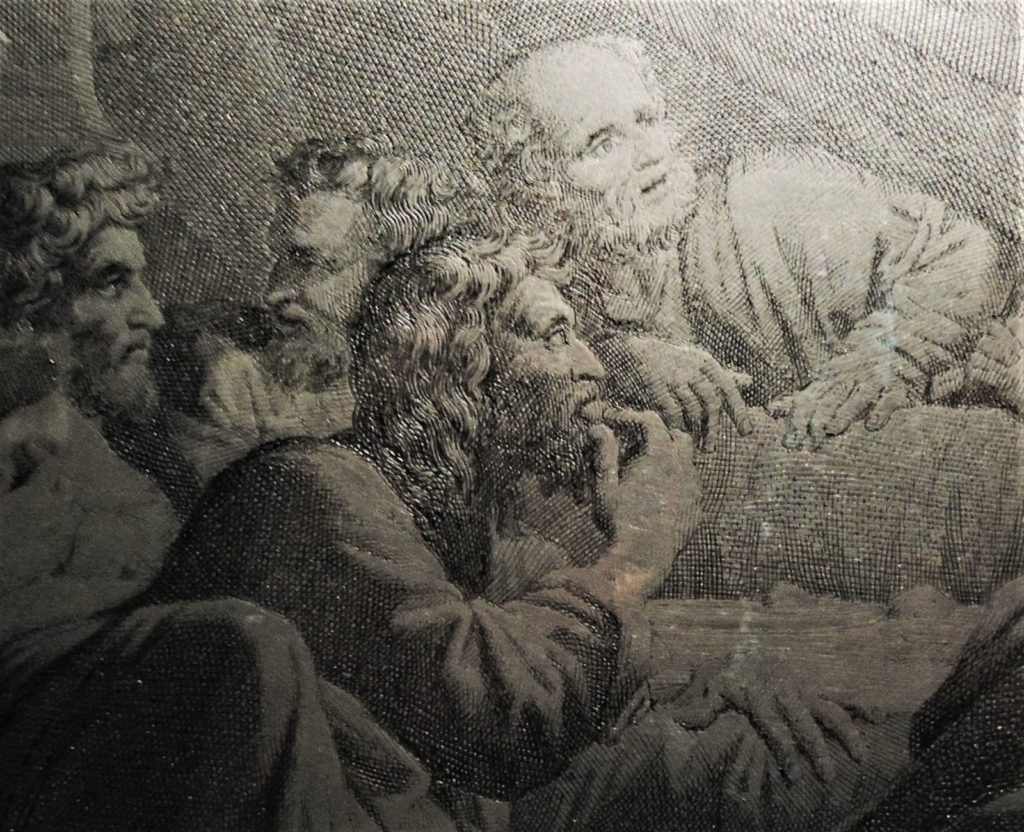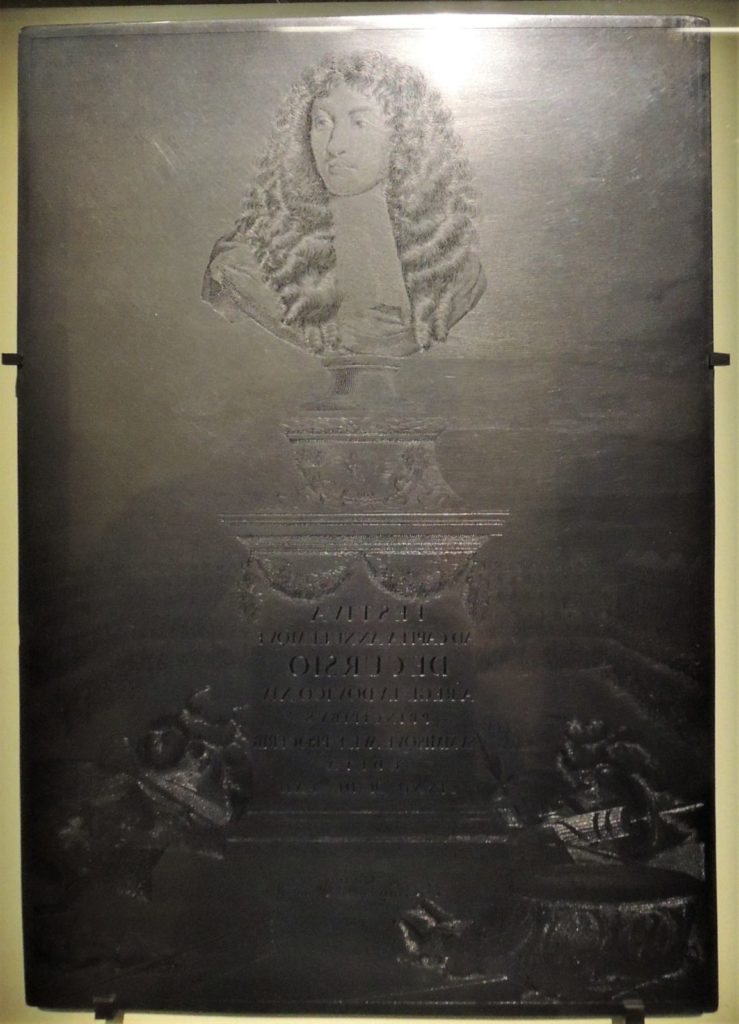
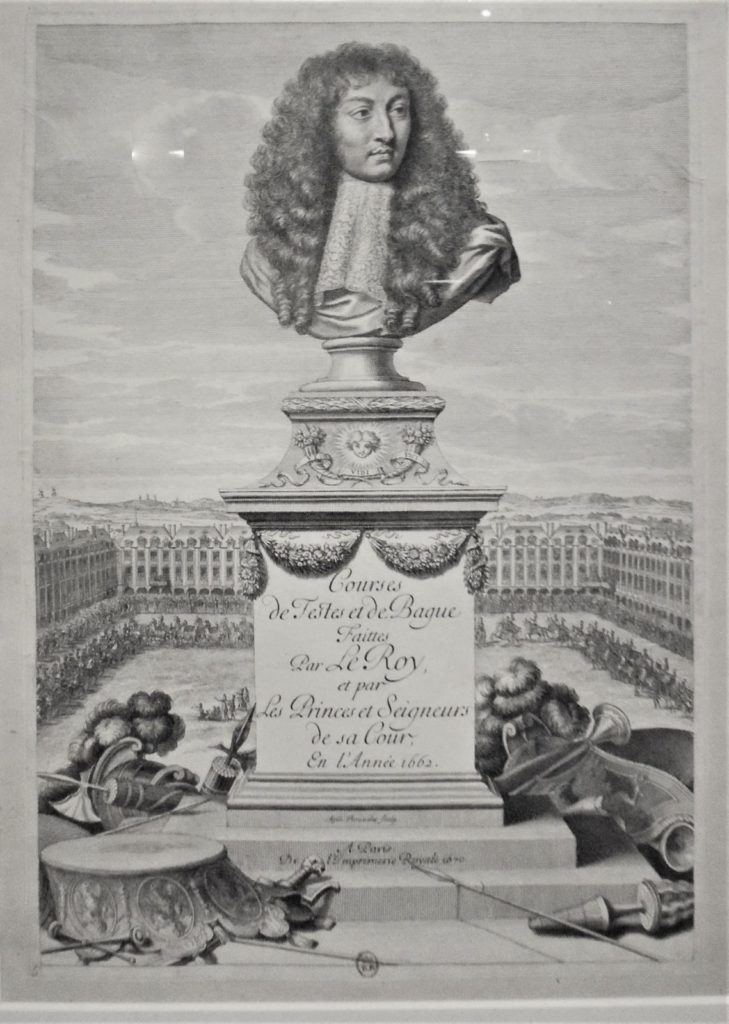 Gilles Rousselet and Israel Silvestre, frontispiece for Charles Perrault, Courses de testes et de bague, faites par le Roy, et par les Princes et Seigneurs de sa cour en l’année 1662. Paris, 1670. Copper plate and engraving.
Gilles Rousselet and Israel Silvestre, frontispiece for Charles Perrault, Courses de testes et de bague, faites par le Roy, et par les Princes et Seigneurs de sa cour en l’année 1662. Paris, 1670. Copper plate and engraving.
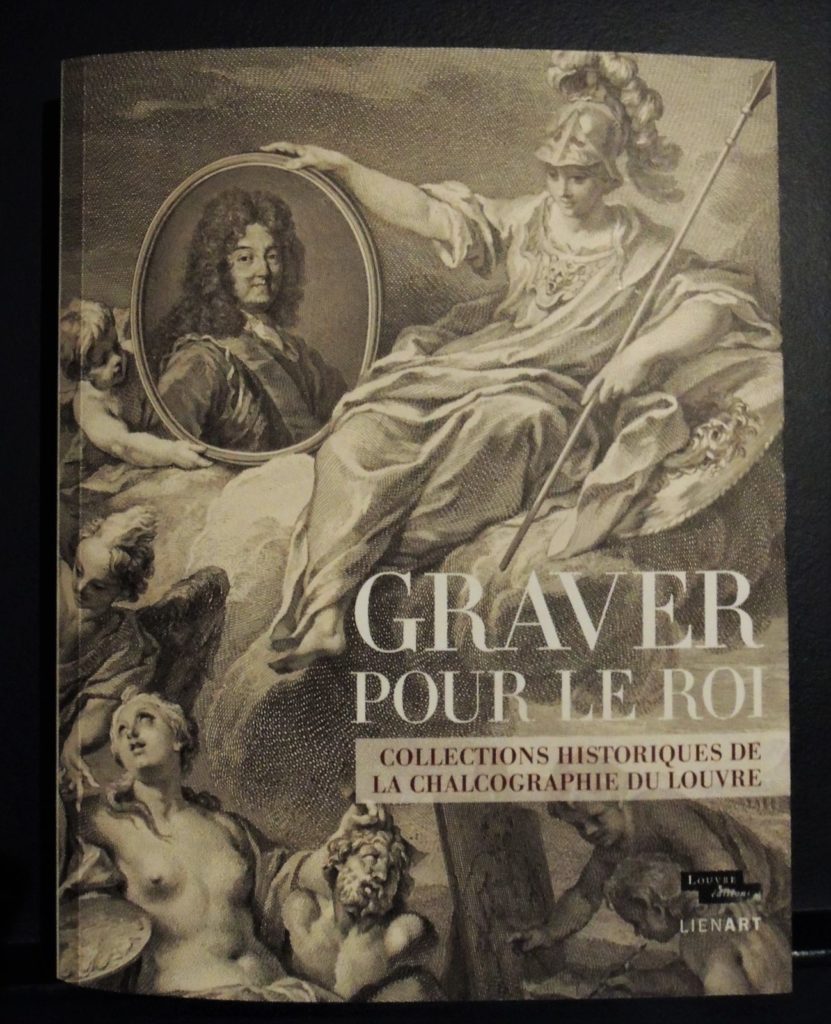 On view through May 20, 2019, at the Louvre is the exhibition Graver pour le roi: Collections historiques de la Chalcographie du Louvre. http://presse.louvre.fr/graver-pour-le-roi/. The press release notes:
On view through May 20, 2019, at the Louvre is the exhibition Graver pour le roi: Collections historiques de la Chalcographie du Louvre. http://presse.louvre.fr/graver-pour-le-roi/. The press release notes:
Exceptionally bringing together more than a hundred works, the exhibition traces the origins of the Chalcography of the Louvre with nearly seventy engraved matrices of its collection, presented in relation to drawings of the Department of Graphic Arts of the Louvre Museum and prints from the Edmond de Rothschild collection and the Bibliothèque nationale de France.
 Gérard Edelinck, after Charles Le Brun, La Famille de Darius aux pieds d’Alexandre
Gérard Edelinck, after Charles Le Brun, La Famille de Darius aux pieds d’Alexandre
https://rbsc.princeton.edu/versailles/item/924
Many of the copper plates on view are matrices for the prints Princeton students and visitors enjoyed a few years ago in the exhibition Versailles on Paper. https://rbsc.princeton.edu/versailles/
Our prints were acquired by Princeton University in 1886 in an exchange with the Bibliothèque nationale (Paris), thanks to John S. Pierson, Class of 1840, who effected the exchange, recorded by the BN as “Double échangé” no. 907. Volker Schröder, Associate Professor of French in the Department of French & Italian, researched and clarified this information for his essay in the Princeton University Library Chronicle dedicated to our exhibition. http://rbsc.princeton.edu/versailles/content/chronicle-article-abstracts
https://graphicarts.princeton.edu/2014/06/12/louis-xiv-visits-the-royal-academy-of-sciences/
In the galleries, the polished copper and steel-plated matrices are brightly lit and difficult to photograph without reflection. Happily the catalogue to the show, coming soon to Princeton, has excellent reproductions of both the printing plates and the paper prints.
 Charles Nicolas Cochin fils, Pompe funebre d’Elisabeth Therese de Lorraine, Reine de Sardaigne ... [Interior of the Cathedral of Notre Dame de Paris, decorated for the funeral of Elizabeth Theresa, Queen of Sardinia], 1743. Copper plate and engravings.
Charles Nicolas Cochin fils, Pompe funebre d’Elisabeth Therese de Lorraine, Reine de Sardaigne ... [Interior of the Cathedral of Notre Dame de Paris, decorated for the funeral of Elizabeth Theresa, Queen of Sardinia], 1743. Copper plate and engravings.
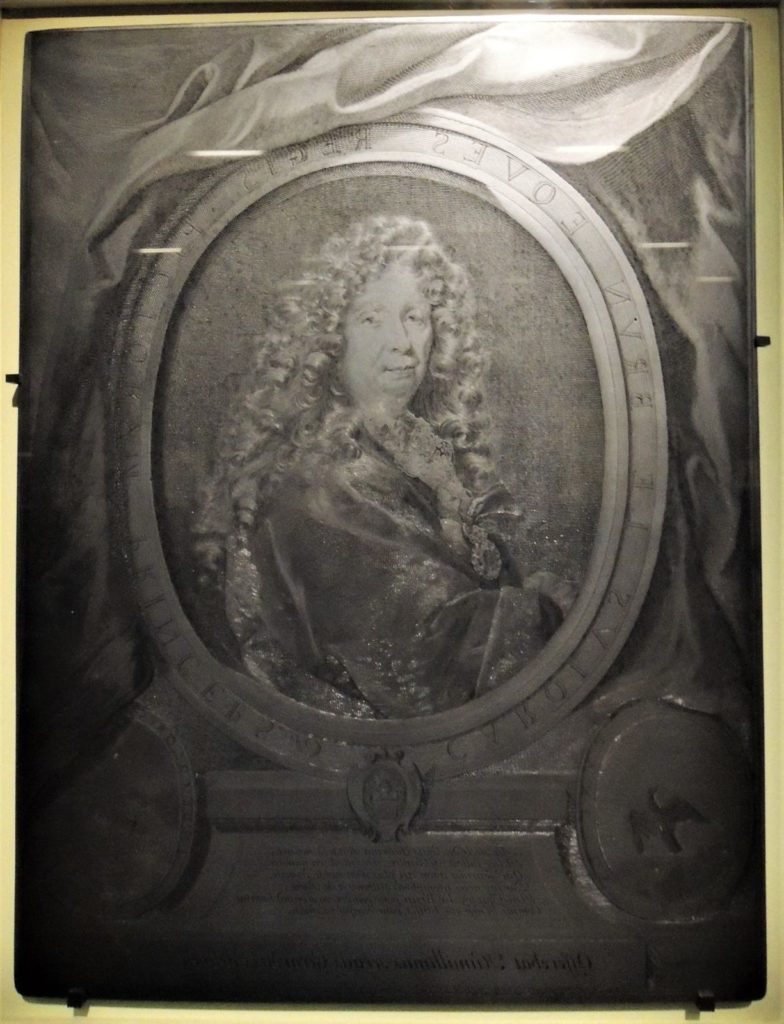 Gerard Edelinck after Nicolas de Largilliere, Portrait of Charles Le Brun, 1684. https://rbsc.princeton.edu/versailles/item/923
Gerard Edelinck after Nicolas de Largilliere, Portrait of Charles Le Brun, 1684. https://rbsc.princeton.edu/versailles/item/923
A loose translation of one label:
The Chalcography of the Louvre is rich in a collection of some 14,000 engraved plates, the oldest of which date back to the 17th century. When it was founded in 1797, the new institution was given the role of preserving and exploiting three important sets of engraved plates seized during the French Revolution: those of the King’s Cabinet, the Pleasures Menus, and of the Royal Academy of Painting and Sculpture. The Cabinet of the King , born from the will of Louis XIV and Colbert, gathers 956 prints showing the castles, statues and paintings belonging to the king. Designed to spread the image of the magnificence of power, these boards are the work of the best engravers of time, such as Claude Mellan, Gerard Audran, Gérard Edelinck.
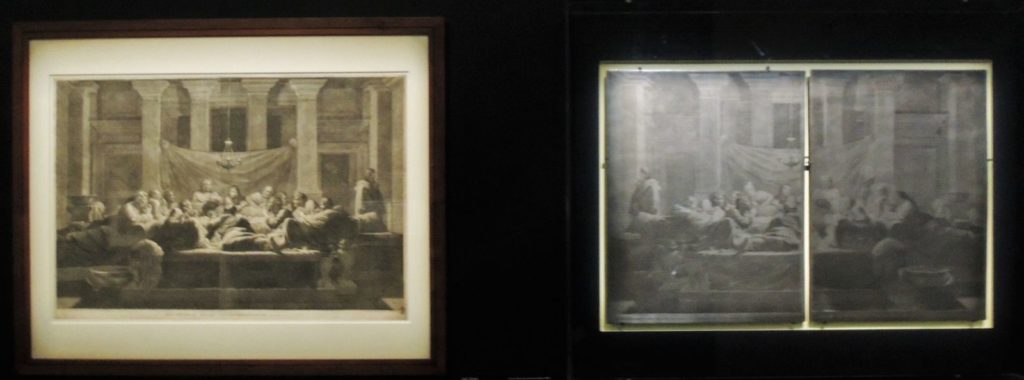 Jean Pesne after Nicolas Poussin, L’Eucharistie – Das letzte Abendmahl, [1680-1694]
Jean Pesne after Nicolas Poussin, L’Eucharistie – Das letzte Abendmahl, [1680-1694]


